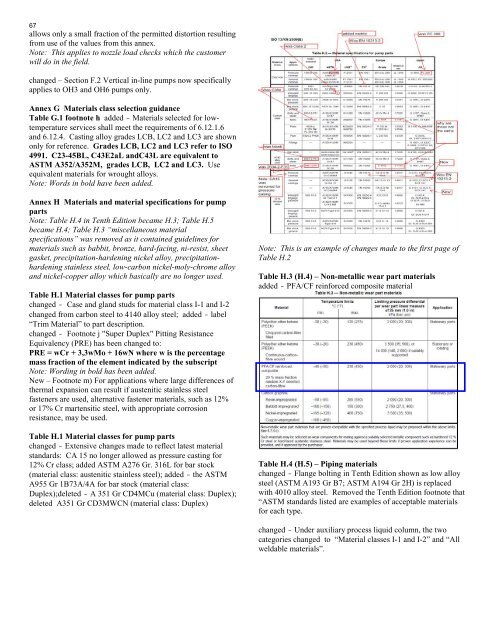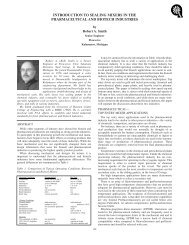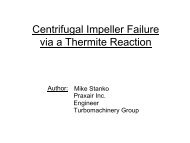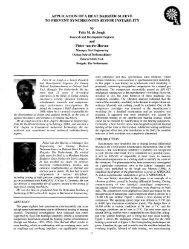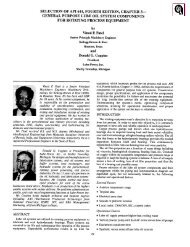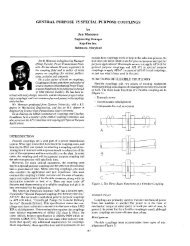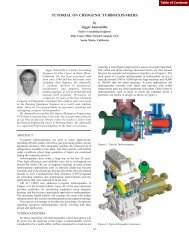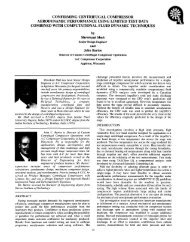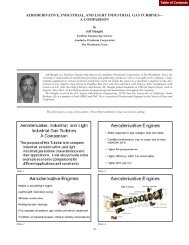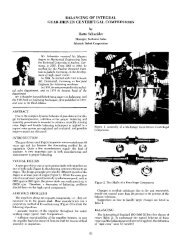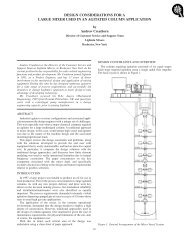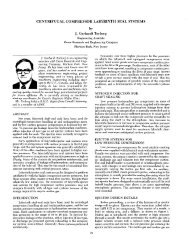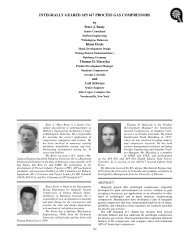ISO 13709 2nd Edition/ API 610 Eleventh Edition Highlights
ISO 13709 2nd Edition/ API 610 Eleventh Edition Highlights
ISO 13709 2nd Edition/ API 610 Eleventh Edition Highlights
You also want an ePaper? Increase the reach of your titles
YUMPU automatically turns print PDFs into web optimized ePapers that Google loves.
67<br />
allows only a small fraction of the permitted distortion resulting<br />
from use of the values from this annex.<br />
Note: This applies to nozzle load checks which the customer<br />
will do in the field.<br />
changed – Section F.2 Vertical in-line pumps now specifically<br />
applies to OH3 and OH6 pumps only.<br />
Annex G Materials class selection guidance<br />
Table G.1 footnote h added - Materials selected for lowtemperature<br />
services shall meet the requirements of 6.12.1.6<br />
and 6.12.4. Casting alloy grades LCB, LC2 and LC3 are shown<br />
only for reference. Grades LCB, LC2 and LC3 refer to <strong>ISO</strong><br />
4991. C23-45BL, C43E2aL andC43L are equivalent to<br />
ASTM A352/A352M, grades LCB, LC2 and LC3. Use<br />
equivalent materials for wrought alloys.<br />
Note: Words in bold have been added.<br />
Annex H Materials and material specifications for pump<br />
parts<br />
Note: Table H.4 in Tenth <strong>Edition</strong> became H.3; Table H.5<br />
became H.4; Table H.3 “miscellaneous material<br />
specifications” was removed as it contained guidelines for<br />
materials such as babbit, bronze, hard-facing, ni-resist, sheet<br />
gasket, precipitation-hardening nickel alloy, precipitationhardening<br />
stainless steel, low-carbon nickel-moly-chrome alloy<br />
and nickel-copper alloy which basically are no longer used.<br />
Table H.1 Material classes for pump parts<br />
changed - Case and gland studs for material class I-1 and I-2<br />
changed from carbon steel to 4140 alloy steel; added - label<br />
“Trim Material” to part description.<br />
changed - Footnote j "Super Duplex" Pitting Resistance<br />
Equivalency (PRE) has been changed to:<br />
PRE = wCr + 3,3wMo + 16wN where w is the percentage<br />
mass fraction of the element indicated by the subscript<br />
Note: Wording in bold has been added.<br />
New – Footnote m) For applications where large differences of<br />
thermal expansion can result if austenitic stainless steel<br />
fasteners are used, alternative fastener materials, such as 12%<br />
or 17% Cr martensitic steel, with appropriate corrosion<br />
resistance, may be used.<br />
Table H.1 Material classes for pump parts<br />
changed - Extensive changes made to reflect latest material<br />
standards: CA 15 no longer allowed as pressure casting for<br />
12% Cr class; added ASTM A276 Gr. 316L for bar stock<br />
(material class: austenitic stainless steel); added - the ASTM<br />
A955 Gr 1B73A/4A for bar stock (material class:<br />
Duplex);deleted - A 351 Gr CD4MCu (material class: Duplex);<br />
deleted A351 Gr CD3MWCN (material class: Duplex)<br />
Note: This is an example of changes made to the first page of<br />
Table H.2<br />
Table H.3 (H.4) – Non-metallic wear part materials<br />
added - PFA/CF reinforced composite material<br />
Table H.4 (H.5) – Piping materials<br />
changed - Flange bolting in Tenth <strong>Edition</strong> shown as low alloy<br />
steel (ASTM A193 Gr B7; ASTM A194 Gr 2H) is replaced<br />
with 4010 alloy steel. Removed the Tenth <strong>Edition</strong> footnote that<br />
“ASTM standards listed are examples of acceptable materials<br />
for each type.<br />
changed - Under auxiliary process liquid column, the two<br />
categories changed to “Material classes I-1 and I-2” and “All<br />
weldable materials”.


